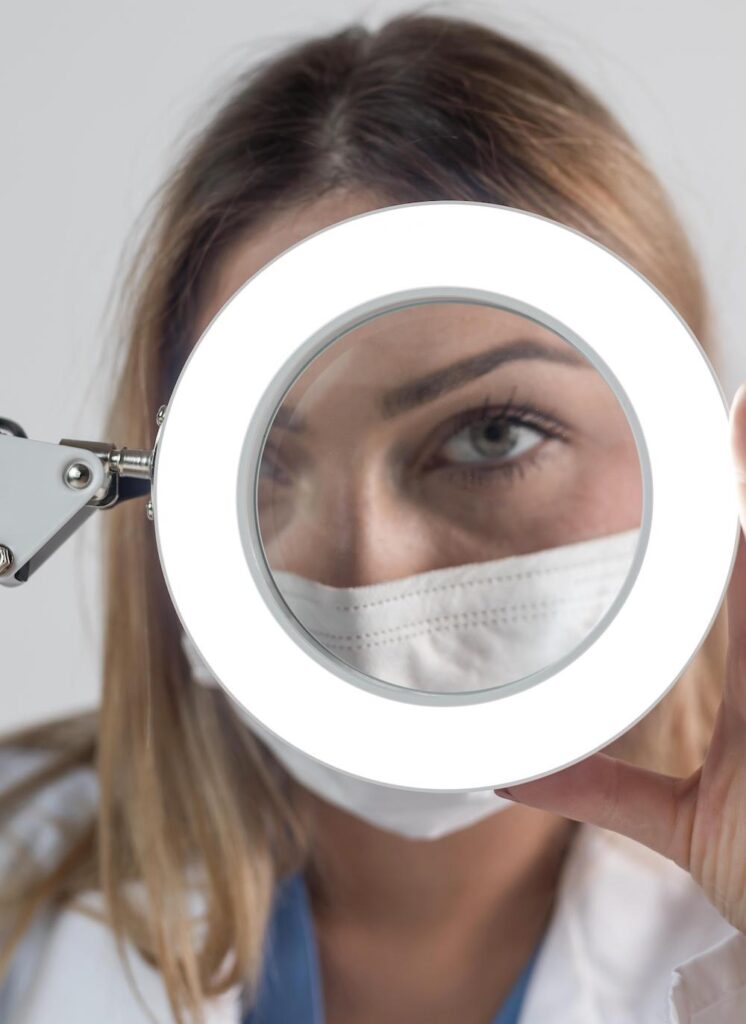Shedding New Light on Cataract Care
(Posted on Tuesday, October 10, 2023)

This article was published on Forbes on 10/5/2023.
This story is part of a series on the current progression in Regenerative Medicine. This piece is part of a series dedicated to the eye and improvements in restoring vision. It also marks part two of a four-part series on cataracts.
In 1999, I defined regenerative medicine as the collection of interventions that restore to normal function tissues and organs that have been damaged by disease, injured by trauma, or worn by time. I include a full spectrum of chemical, gene, and protein-based medicines, cell-based therapies, and biomechanical interventions that achieve that goal.
In the first part of this series, we discussed cataracts, including their global prevalence, molecular basis, and traditional surgical approach. This piece will delve deeper into the surgical options for cataracts and the potential for new cutting-edge techniques for treatment.
Understanding Intraocular Lenses
Cataract extraction surgery is currently one of the most performed surgeries in the world. It is a surgical procedure that involves removing and replacing the opaque lens with an intraocular lens or IOL.
The Intraocular Lens (IOL) is a permanent implant made of high-quality plastic placed inside the eye. IOLs, such as standard mono-focal, premium multifocal, and toric lenses, are available. Each lens type fulfills specific visual requirements and tasks.
A standard monofocal lens typically replaces the natural lens removed during cataract surgery for those with mild or single-vision prescriptions. They focus on either up-close, medium-range, or distance vision. Most people have them set for clear-distance vision and wear glasses for reading or close work.
Those with presbyopia often use multifocal lenses, supporting both near and far vision. During an adjustment period, the brain learns to select necessary vision information for objects at different distances. Insurance coverage for multifocal IOLs may be limited, and these lenses tend to be pricier than mono-focal lenses.
The toric lenses are for use in patients with astigmatism. An astigmatism is when the cornea is curved unevenly, causing light to be scattered instead of focused. Toric lenses are more precise and customized for each patient’s unique needs. They correct near, intermediate, or farsightedness.
Like all medical procedures, complications can arise when receiving an intraocular lens implant. One such complication is the posterior capsule (behind the intraocular lens) may become cloudy months or years after cataract surgery. If this happens, the surgeon will perform a simple laser to clear the capsule.
What About Nonsurgical Options for Cataracts?
There are currently no permanent nonsurgical options for treating cataracts. Nevertheless, various nonsurgical alternatives may help alleviate the symptoms of cataracts, slow their progression, and reduce their severity. Some of these options include consuming nutritional supplements such as carotenoids, vitamins E and C, and organic compounds.
Future options may include eye drops, as some eye drops work to dissolve cataracts. A group of professionals from the University of California, San Diego, strives to replicate the clinical trials’ outcomes to present an alternative surgery.
Researchers have developed a new medication that utilizes a naturally occurring steroid called lanosterol. This steroid has shown potential in preventing the clustering of flawed crystallin proteins that lead to cataracts in the non-congenital form of the disease. The next step for the scientists is to determine the precise mechanism behind how the lanosterol-based eye drops work and to conduct further research through human trials.
This discovery could revolutionize how cataract treatments are conducted, offering a promising alternative to surgery. Speaking of game-changing alternatives, gene therapies also hold promise as a future innovation for treating cataracts.
Cutting Edge Gene Therapy for Combatting Cataracts
In essence, gene therapy is a cutting-edge approach that aims to address genetic mutations responsible for various illnesses in patients. Gene therapy strives to replace or repair defective genes. It does this by introducing fresh genes into the body. This transformative process involves using specially engineered viruses as vectors to deliver healthy genes into the patient’s cells, targeting the root cause of genetic diseases.
Studies have revealed that specific genes play a crucial role in the formation of cataracts in both humans and rodents. These genes include GJA1, GJA3, and GJA8, which encode proteins known as connexins. In particular, Cx43, Cx46, and Cx50 are the connexins produced by these genes. Among these, Cx46 and Cx50 are predominantly present in the cells of the lens fibers, whereas Cx43 is common in the cells of the lens epithelium.
Any disruption in the expression of these genes can significantly contribute to the onset of severe cataracts in both humans and mice. Such findings highlight the importance of these genes in maintaining proper lens function and preserving visual acuity. Overall, these genes play a crucial role in maintaining the integrity of the lens, highlighting the importance of these genes in preventing cataracts.
There needs to be more information on gene therapies specifically for cataracts. Still, discovering these genes and the success of gene therapies for other eye disorders, such as age-related macular degeneration, provide hope for those facing vision impairment due to cataracts.
Wrapping it All Up
Cataract surgery is a procedure that aims to improve visual acuity and quality of life. Intraocular lenses provide patients with various options depending on their visual needs, such as mono-focal, multifocal, or toric lenses. However, complications such as posterior capsule opacification may arise, requiring additional treatment.
While there are currently no permanent nonsurgical options for treating cataracts, promising research indicates that eye drops containing lanosterol and gene therapy could potentially revolutionize cataract treatment, providing a much-needed alternative to surgery. With continued research advancements, we hope to see significant improvements in preventing, diagnosing, and treating cataracts, ultimately preserving and restoring visual function for millions worldwide.
To learn more about the eye, read more stories at www.williamhaseltine.com

